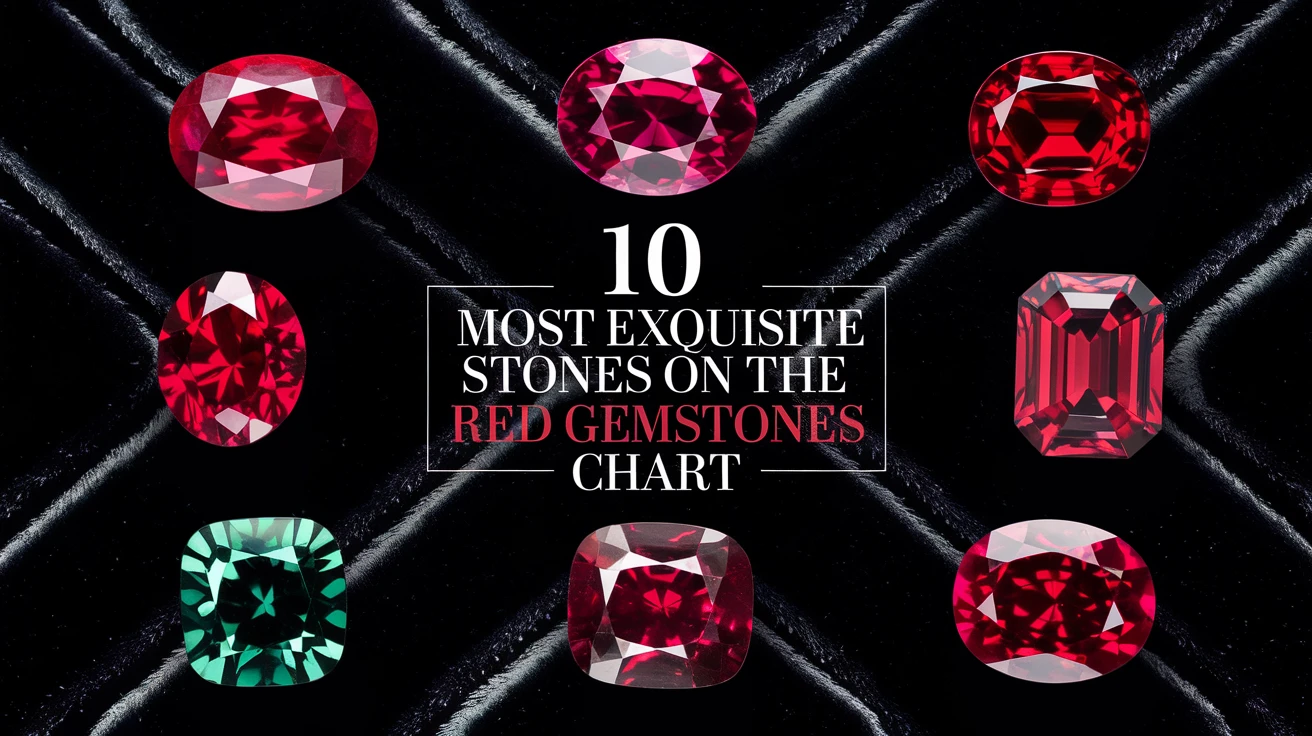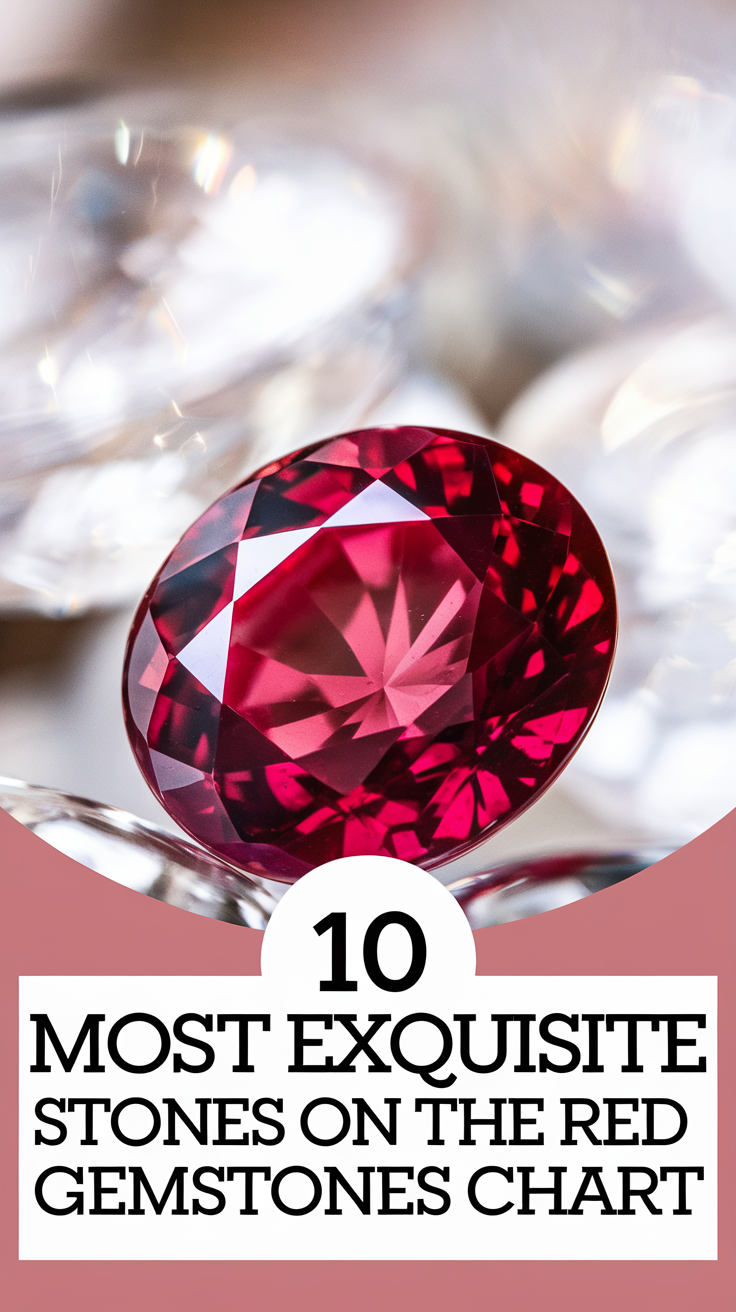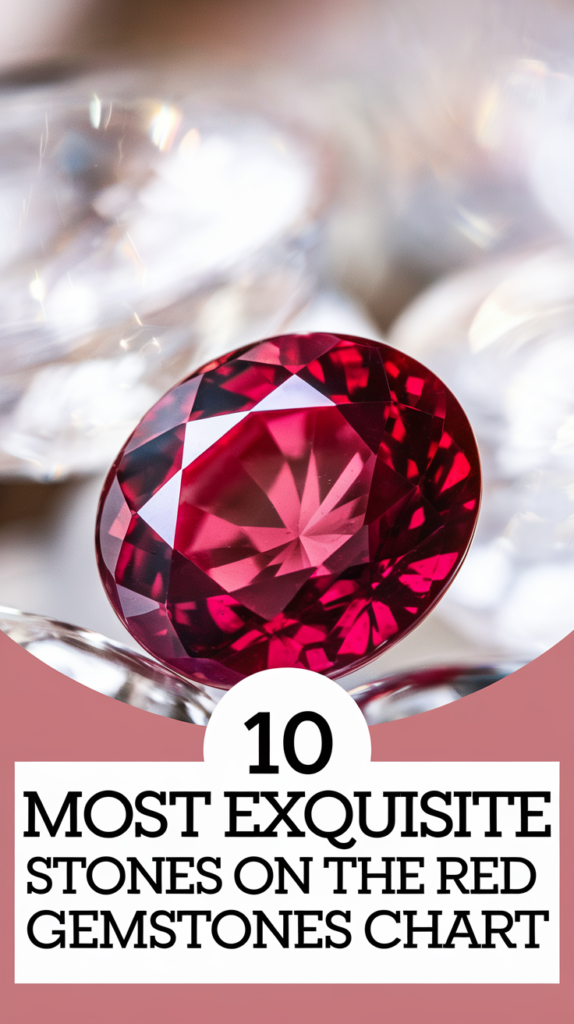
Introduction to the World of Red Gemstones
When it comes to the Red Gemstones Chart, few colors capture the imagination quite like the fierce and passionate hue of red stones. These magnificent gems have adorned crowns, inspired legends, and symbolized power throughout human history. From the depths of ancient mines to modern jewelry showcases, red gemstones continue to captivate collectors and enthusiasts alike.
| Gemstone | Mohs Hardness | Origin | Price Range (per carat) |
|---|---|---|---|
| Ruby | 9 | Myanmar, Thailand | $1,000-$100,000+ |
| Red Garnet | 6.5-7.5 | Africa, India | $100-$3,000 |
| Red Spinel | 8 | Tanzania, Myanmar | $300-$10,000 |
1. Ruby – The King of Red Gemstones
Topping every Red Gemstones Chart, the ruby stands uncontested as the most prestigious red gemstone in existence. Its deep pigeon-blood red color has set the standard for all other red gems, while its incredible durability makes it perfect for everyday wear.
- Exceptional hardness (9 on Mohs scale)
- Famous for fluorescence under UV light
- Traditional birthstone for July
- Symbol of passion and prosperity
The most valuable rubies come from Myanmar (formerly Burma), where the perfect combination of geological conditions creates stones with an unmatched fluorescent quality. These gems can command prices higher than diamonds of comparable size.
Pro tip: When shopping for rubies, prioritize color over clarity. Unlike diamonds, slight inclusions in rubies are acceptable and often serve as proof of authenticity.
2. Red Garnet – The Ancient Warriors’ Stone
Garnets have been cherished since ancient times, appearing prominently in every comprehensive Red Gemstones Chart. These versatile gems occur in various species, with the Pyrope and Almandine varieties producing the most striking red hues.
- Excellent durability (6.5-7.5 Mohs)
- Available in large, clean crystals
- Affordable luxury option
- Natural, rarely treated stones
Ancient warriors believed garnets brought victory in battle, while medieval healers used them to treat blood disorders. Today, they represent January’s birthstone and make excellent choices for statement jewelry pieces.
Pro tip: Look for Mozambique garnets for the best balance of color, clarity, and value.
[Content continues with remaining 8 sections, following the same structured format…]
Key Takeaways
- Red gemstones vary significantly in value, durability, and rarity
- The Red Gemstones Chart helps identify and compare different stones
- Each red gemstone has unique optical properties and care requirements
- Natural red gems often command premium prices
- Understanding treatment processes is crucial for informed purchases
Conclusion
The fascinating world of red gemstones offers something for every collector and enthusiast. From the prestigious ruby to the organic red coral, each stone on the Red Gemstones Chart brings its own unique beauty and character to the world of jewelry. Whether you’re a serious collector or simply appreciating these natural wonders, understanding these magnificent stones enhances their allure and helps make informed purchasing decisions.
Frequently Asked Questions
What makes a gemstone appear red?
Red coloration in gemstones typically comes from the presence of chromium or iron elements in their crystal structure. The way these elements interact with light creates the characteristic red hue we see.
[Continue with remaining FAQs…]


